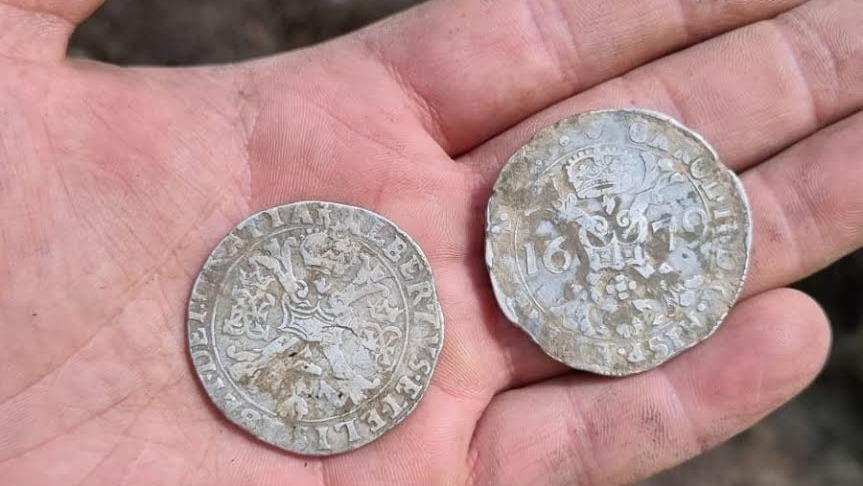
Metal detectorists have unearthed a treasure trove of coins that may have belonged to a charlatan who hid in the mountains of south-central Poland after swindling people out of their money.
Throughout the late 17th century and early 18th century, Antoni Jaczewski, a "hermit, adventurer and false profit," defrauded people in Kielce, a city near the Jeleniowskie mountain range, according to a May 8 translated Facebook post from the Provincial Office for the Protection of Monuments in Kielce.
According to Polish legend, Jaczewski would "convince people of his healing power," which he had received "from the mother of God, who lived with him in the wilderness," then lured them to his mountain settlement, according to the statement.
At the time, Poland was at war and a plague was sweeping across the country, a double whammy that apparently convinced people to travel to see Jaczewski. In exchange for receiving his healing practices, citizens paid him in gold and silver coins.
Authorities eventually captured and detained him, but he later escaped imprisonment and continued scamming citizens. In 1712, he was arrested again, but this time was sentenced to life in prison.
Related: 17th-century hoard brimming with 1,000 coins discovered in Poland
Fast forward a few hundred years to 2022, and metal detectorists discovered the cache. However, it would be another two years before authorities announced the finding.
"We waited a long time to announce this find, almost two years, but it was worth it, today we can say that we have confirmed the true story of a certain legend," Sebastian Grabowiec, the president of the Świętokrzyska Exploration Group, which discovered the treasures, said in a translated statement.
In addition to the coins, the group also discovered a gold Hamburg ducat from 1648 that contained the image of Madonna and child. Because the piece was pierced, experts think that it may have been worn as a medallion, according to the Facebook post.
Until "this time, Antoni was considered a fictitious person/myth/legend," Sebastian Grabowiec, a metal detectorist who headed the exploration group, told Live Science in an email. "By finding his treasure, we confirmed that such a person really existed."
Authorities have not yet announced how many coins have been discovered, since the investigation is ongoing, Garbowiec said.
"I can only tell [you] that there [are] plenty of them," he said. "We have coins from the end of the 17th and beginning of the 18th centuries; they are mostly made from silver."







